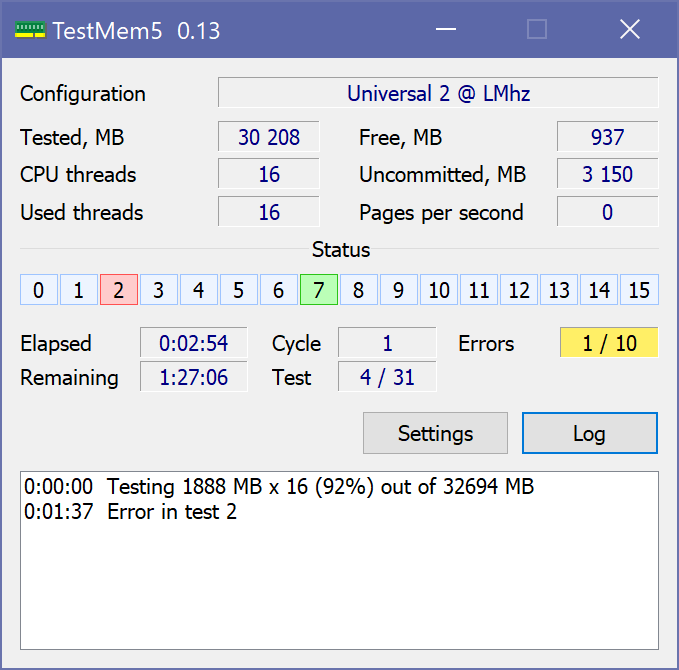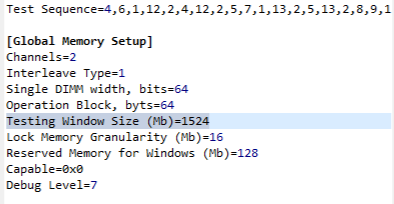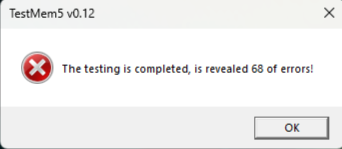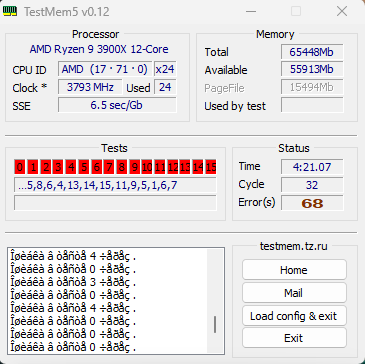TestMem5 is a powerful, lightweight memory stress testing tool designed for serious PC users and overclockers. Instantly identify memory errors, stability issues, and optimize your system’s performance with advanced diagnostics. Trusted by professionals, TestMem5 delivers fast and accurate results for DDR4, DDR5, and all modern RAM types. Download TestMem5 now to ensure rock-solid memory reliability and unlock your PC’s true potential.
Key Features
Custom Presets & Deep Diagnostics
Advanced, configurable tests with community‑trusted presets to expose subtle timing and stability errors.
Fast, Efficient Cycles
Quick, reliable passes so you can validate RAM stability and tune overclocks without wasting time.
Portable & Lightweight
No installation—just download and run. Perfect for fresh builds, test benches, and field diagnostics.
Pro‑Grade Accuracy
Trusted by builders and overclockers to catch intermittent RAM faults and ensure rock‑solid reliability.
Ideal for…
Frequently Asked Questions
How many cycles should I run for TM5 (Anta777 Extreme / Absolut)?
For a quick screen, run at least 3 cycles. For tight timings or higher clocks, extend to 6–10+ cycles or overnight. Late‑cycle errors often reflect temperature or marginal voltages—ensure stable ambient and cooling.
What’s the difference between Anta777 “Extreme” and “Absolut” profiles?
Absolut is a newer/faster config complementing Extreme. A common workflow: 3× Extreme + 3× Absolut for quick validation, then longer Absolut runs when tightening timings further.
TM5 showed an error (e.g., code 2, 6, 12 “MirrorMove”). What should I do?
Treat any error as instability under a specific sub‑test:
- Undo the last aggressive change (loosen the most recent timing).
- Adjust voltages in small steps (e.g., VDIMM; IMC/SA where applicable) and re‑test.
- Check temperatures/airflow; rerun after cooling adjustments.
TM5 vs MemTest86 vs HCI/Karhu/OCCT — which should I trust?
No single tool is definitive. Many users rely on TM5 for fast fault detection, then confirm with HCI/Karhu or OCCT for longer, mixed workloads. Combine tests for higher confidence.
How do I load Anta777 configs and set one as default?
Run TM5 as Administrator, choose Load config and exit, then relaunch. If it reverts, edit bin/Cfg.link to point to your preferred profile (e.g., [email protected]) so it loads on start.
TM5 shows only part of my RAM as “available.” Is that normal?
Yes. Windows and drivers reserve memory. Close background apps, avoid other workloads, and run TM5 as Administrator to maximize available memory for testing.
I passed 3–6 cycles but still crash in games. What next?
Increase depth (more cycles), add heat (e.g., GPU load) to match case temps, and cross‑verify with another tool. If late errors appear, add small voltage headroom or relax secondary/tertiary timings slightly.
TM5 flags errors at stock XMP/EXPO. Is my RAM bad?
Not necessarily. It could be borderline IMC/board configuration, insufficient voltage, or thermals. Retest with improved airflow and modest voltage tuning. If conservative settings still fail and other tools corroborate, consider an RMA.
Where can I safely download TM5 and popular Anta777 presets?
Use trusted sources only and verify integrity. Avoid repacks bundling unknown executables. Prefer the original author’s thread or recognized community mirrors, and compare checksums where provided.
Will running TM5 harm my RAM or SSD? Can I use the PC while testing?
TM5 uses standard memory operations—it won’t “wear out” RAM/SSDs. But it intentionally provokes instability if settings are marginal, which can crash open apps. For accuracy (and safety), don’t use the PC during tests; close other programs and let TM5 run uninterrupted.




